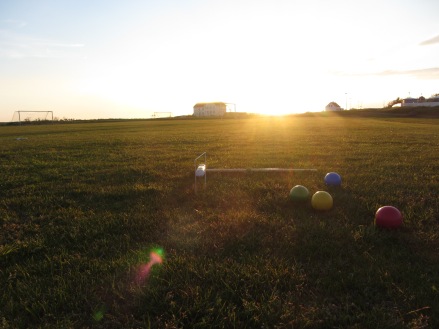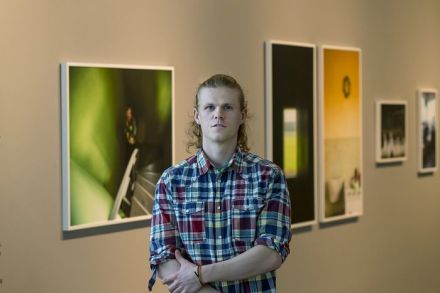Back in the spring, the Iceland Writers Retreat held a writing contest. Using a photo taken in the Harpa concert hall as inspiration (see above), participants were supposed to write an original short story or essay of no more than 500 words. The winner, chosen by Iceland Travel and a panel of judges, would receive free spot in the 2015 retreat.
Now, that was a pretty good prize and I thought it would be a good excuse to flex those creative writing muscles, so I gave it a shot. And I was pretty pleased with the result. I didn’t win the grand prize, but nicely enough, my story was chosen as one of the 10 runners-up. All ten of these stories, including my own, have been published now on the Harpa website and they even threw in a photo book and free tickets to a fall concert to boot. Not too shabby.
My story was called “By the Time the Sun Goes Down.” Here’s the beginning:
On an evening this clear—the soft pastel light leaping off the glass, bouncing, somehow musically, between the water as it softly plashes against the sides of the harbor boats and the honeycombed windows that I’m sitting here staring through like an idiot—I should really be outside. But while I’ve lived here long enough to know better than to take such a respite for granted, I haven’t lived here long enough to have mastered the art of last minute outdoor adventuring.
Not like my neighbors, for instance, who seem to be in a state of constant readiness. It takes them all of ten minutes to get six mountain bikes, a kayak, a dog, and four clamoring kids packed into their trusty, rusty SUV, anoraks and hiking boots and helmets, pallets of single-serving chocolate milk boxes and plastic-wrapped sandwiches tossed in every which way behind them. Ten minutes. I know—I’ve timed them. The minute the sky clears and the sun comes out, they’re off. I always wonder where they go.
If you’d like to read the rest, it’s the first story on this page. And, if you’re interested, you can read the other runners-up as well: here and here. Happy reading!















